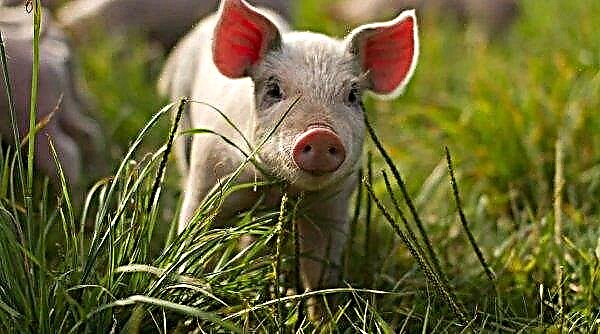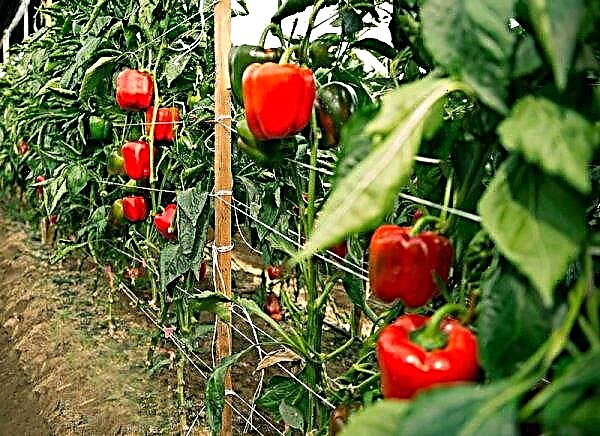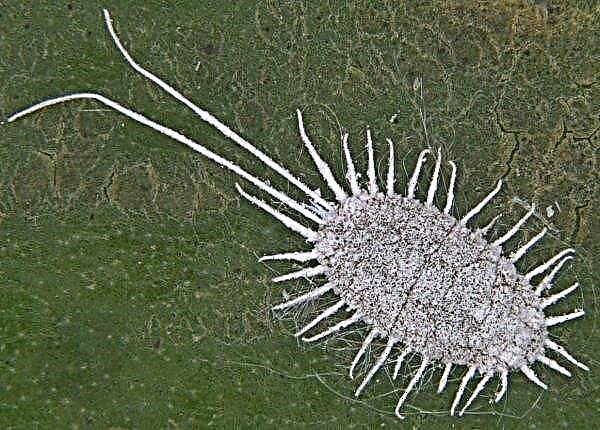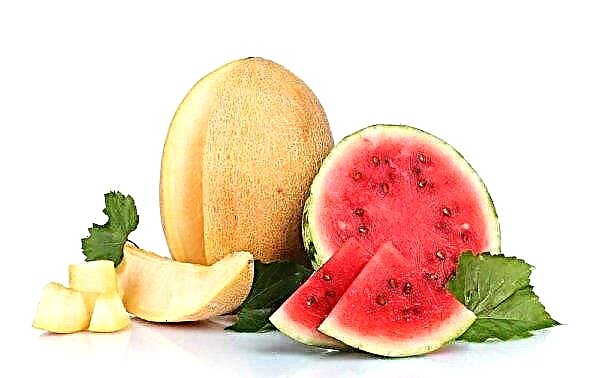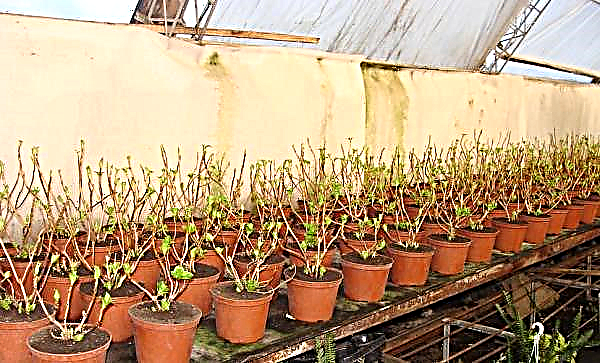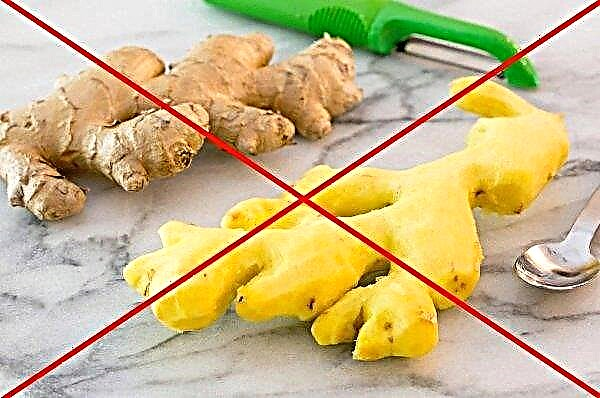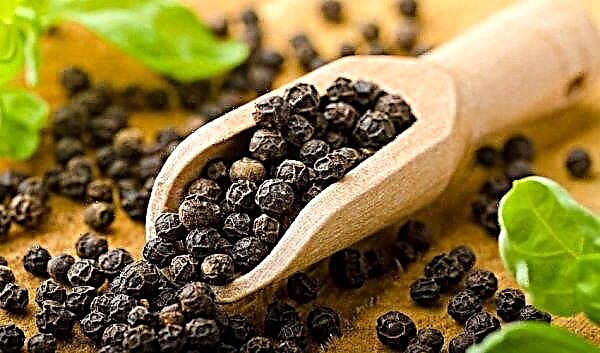A few decades ago, many admired the orchid, but were afraid to grow it on their own. Today, many flower growers have this exotic plant at home. Despite the fact that it is whimsical, looking after it is not very difficult, knowing all the nuances. The most common problem that the florist is facing is that the peduncle of the orchid dries up. Why this happens, and what to do with it - we will tell further.
Purpose of a flower-bearing shoot
The flower stalk is an appendage on which inflorescences form. An orchid throws such an arrow immediately after the end of the dormant period, when the flower has rested and gained strength. After the peduncle is ejected, the flowering phase begins: ovaries form, which later grow and bloom. At this, the mission of the peduncle ends.
Important! Trimming the flower-bearing arrow immediately after flowering should not be. When it is strong and green, new inflorescences may appear on it soon.
What looks like a dried flower stalk
In the drying phase, the arrow loses its stiffness and elasticity. At this time, her appearance smoothly changes: the green tone gradually fades and fades. The flower stalk loses its shape and becomes purple or brown.

In the drying part of the plant there is no refreshing moisture. In the dried peduncle, photosynthesis and other life processes stop. Simply put, this part of the flower fades away.
When this phenomenon is not normal
If the peduncle turned yellow after the flowering phase, this is quite natural. If the arrow dries up while the buds appear on it, this is already abnormal - the flowers will not be able to open. In this case, you should look for reasons, review the conditions of detention and the regime of care.
Why does an orchid flower stalk dry?
The reasons why the flower stalk has dried can be very different, both natural and those that arise as a result of improper care. All these factors have their own solution.

Incorrect lighting
The lack of light is especially noticeable in the fall, when the duration of daylight hours decreases. This plant is in great need of lighting, otherwise it simply dies. In such an environment, a flower stalk can grow, but the buds are unlikely to appear, and after a while the arrow will dry out.
Trying to correct the situation, many mistakenly turn the flower pot toward the light source. However, in orchids, such manipulation causes stress and they behave differently from ordinary flowers, in particular, get rid of a peduncle. The optimal amount of daylight for an orchid is 9-12 hours per day.
Important! Orchids love to have enough light, but it must be diffused.
Oversupply or malnutrition
In the soil where the orchid grows, the following minerals must be present all the time:
- phosphorus;
- magnesium;
- boron;
- potassium.

They are responsible for the absorption of iron, zinc and other minerals. If an excess or deficiency of these substances occurs, the peduncle dries up. Soil should always be fertilized with special complex fertilizers for orchids.
Air humidity
Orchids love a rather humid microclimate, so the air should be additionally moistened, especially in winter, when heating is used. The optimum humidity for the plant is 50–80%. If the moisture concentration drops to 30–35%, this will adversely affect the flower.
Hypothermia
Most often, this problem occurs during transportation or if the air cooling device is directed at the flower. Subcooling is especially dangerous when watering or spraying leaves. It is also not worthwhile to place an orchid on the window in winter time - this leads to its freezing.
Important! A prolonged stay in a moist substrate at a temperature of + 13 ... + 15 ° C leads to drying of the peduncle.
The presence of drafts can also lead to freezing. The temperature of the soil decreases, the roots freeze and are not able to absorb moisture. As a result, the leaves begin to frown and the peduncle dries. By mistake, some try to water the flower more often, but this only exacerbates the situation, causing rotting of the root system.
Root overheating
Orchids grow in the tropics, so they are thermophilic, but the amount of heat should be moderate. You can not expose the plant directly under the scorching rays of the sun, near heating appliances or under a stream of warm air.

Is it worth trimming a dried flower stalk and do I need a transplant
It is possible to completely cut the pedicel only when all the primordia on it have dried. This is an indicator that the peduncle has fulfilled its mission and can be confidently cut to give the plant the opportunity to rebuild for the next flowering. Cut the arrow carefully, near the outlet, trying not to damage it.
Did you know? Some species of orchids grow on trees. But at the same time, they do not parasitize, but use a tree as a support. Other species grow on rocks, clinging to cracks with their roots.
Circumcision is performed with sharp scissors (ordinary or garden). After cutting, the cut site is disinfected so that the plant does not develop disease. To do this, you can take cinnamon powder, activated charcoal.
If insufficient watering became the cause of the pedicel drying out, then the situation is corrected in another way: the watering mode is chosen correctly. The lack of moisture is indicated not only by the dried flower stalk, but also lifeless, faded leaves.
If the flower has a waterlogged root system, then it is necessary to transplant it. The root branches are well cleaned of the soil, disinfected, and the dry parts are trimmed. After a certain time, the plant will completely recover and release a new arrow.

The soil for orchids should include the following components:
- pine bark or cones;
- charcoal (not more than 10% of the substrate);
- sheet earth;
- moss sphagnum.
Did you know? Unlike many flowers, orchids do not cause allergies. Their aroma is very diverse: from light notes of honey and vanilla to the smell of rotten meat.
Aftercare
Further flower care is equally important. The first time after the manipulation is better to leave the plant alone.

To prevent the flower from drying out and recovering, it should create suitable conditions:
- Good and adequate lighting. Daylight hours should be about 9-12 hours. In autumn, it is provided with artificial lighting. At first, it is better not to keep the plant in the light.
- Stable temperature conditions. During the day, the indicators should be within + 22 ... + 24 ° C, at night - + 16 ... + 18 ° C.
- Optimum humidity. It should be in the range of 50–80%. In warm time, the flower is regularly sprayed.
- Watering. This is the most important criterion for orchids. This flower does not tolerate drought, but also reacts no less critically to excessive watering. Humidify the substrate only with soft, settled water. Ideal - rain or boiled. Water from the tap does not water the plant. The first watering is carried out only 2 days after transplantation.
- Lack of drafts. Regular ventilation will not damage the plant (it needs fresh air). But the constant presence in the path of cold air can destroy the flower.
- Regular top dressing. Like any plant, the orchid needs to be fertilized. It is enough to feed 1–2 times a month. Use special complexes for orchids. In the first month after transplantation, the flower is not fed.
Adhering to the simple rules of care, you can get a magnificent flower that will delight you with its flowering for a long time. The main condition is to follow all recommendations and be attentive to the plant.Did you know? The largest inflorescence is the orchid Paphiopedilum sanderianum. On average, the length of its petals reaches 90 cm. And the largest orchids grow up to 20 m in height.

